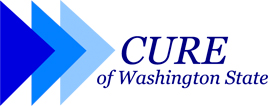This analysis is from LEARN (Lynn’s Education And Research Network) and was written in the era of education “reform” in the 1990s. That “reform” and transformation has been accelerated by the current Common Core system. It is important to understand that the transformation has been occurring for decades.
Education Transformation
by Lynn Stuter
As parents look at education reform, little do they realize that education and the purpose of education are being transformed. No longer is education to produce an innovative, creative, intelligent child, who has a broad but intensive liberal arts background such that he or she can reach for the star of stars of his or her choice. The purpose of education, under this transformation, this paradigm shift, is to mold the child to meet the needs of the global economy of the 21st Century, to produce a world class worker with the attitudes, values and beliefs wanted by big business.
But this is not a phenomenon that transpired with the advent of education reform. Over the past thirty years, since the advent of the Elementary and Secondary Education Act (ESEA) of 1965, schools have been being used to validate programs that are now being used under education reform. This is why parents have watched education deteriorate in the last 30 years, as teaching methods moved from didactic approaches to dialectic approaches founded in a growing philosophy that goes back to beyond 1965 and the ESEA and find definition in the following quotes that pre- and post-date the ESEA:
What we are classifying is the intended behavior of students—the ways in which individuals are to act, think, or feel as the result of participating in some unit of instruction. [1]
…a large part of what we call “good teaching” is the teacher’s ability to attain affective objectives through challenging the students’ fixed beliefs and getting them to discuss issues.
…our concern is to indicate two things: (a) the generalization of this control to so much of the individual’s behavior that he is described and characterized as a person by these pervasive controlling tendencies, and (b) the integration of these beliefs, ideas, and attitudes into a total philosophy or world view. [2]
Since the real purpose of education is not to have the instructor perform certain activities but to bring about significant changes in the students’ patterns of behavior, it becomes important to recognize that any statement of the objectives … should be a statement of changes to take place in the student. [3]
…education, as now conceived, leads to demonstrable changes in student behaviors, changes that can be assessed using agreed-upon standards. [4]
But in a broad survey of employment needs across America, we found little evidence of a far-reaching desire for a more educated workforce. [5]
Worker bees—cooperative, collaborative, team players, not too well educated but willing to work for a pittance for the good of the collective whole (ie, the state). Knowledge is power! A culturally illiterate nation will not long remain free. William Pearson Tolley, Chancelor of Syracuse University, wrote, in 1943,
In a slave state, vocational training may be education enough. For the education of free men, much more is required.
Thomas Jefferson, in 1779, defined the value of education to our society, to our nation, when he wrote,
The most effectual means of preventing the perversion of power into tyranny are to illuminate…the minds of the people at large, and more especially, to give them knowledge of those facts which history exhibits, that they may…know ambition under all it shapes, and…exert their natural powers to defeat its purposes.
_________________
[1] Bloom, Benjamin, editor; Taxonomy of Educational Objectives; Book 1: Cognitive Domain; New York: Longman; 1956.
[2] Bloom, Benjamin, David Krathwohl and Bertram B Masia; Taxonomy of Educational Objectives; Book 2: Affective Domain; New York: Longman; 1964.
[3] Tyler, Ralph; Basic Principles of Curriculum and Instruction; Chicago: University of Chicago Press; 1949.
[4] Conley, David; Roadmap to Restructuring; Eugene: ERIC Clearinghouse on Educational Management, University of Oregon; 1993.
[5] Commission on the Skills of the American Workforce, National Center on Education and the Economy; America’s Choice: high skills or low wages!; Rochester: National Center on Education and the Economy; 1990.
